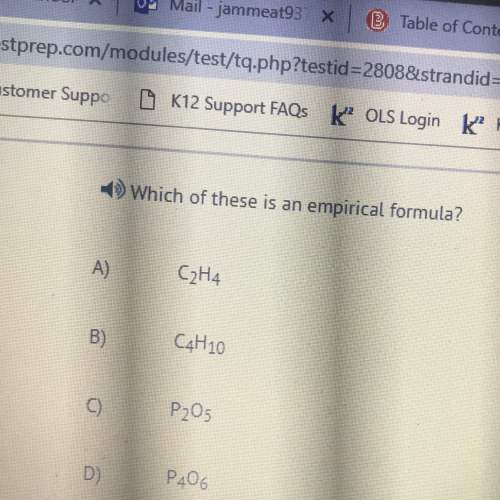
Chemistry, 09.09.2020 18:01 mcmccann4317
Experiments performed with biological systems require a buffer that will not interfere with the stability and activities of the biological components. In 1966, Norman Good and his colleagues began a series of investigations that established criteria for new zwitterionic buffers that would be optimal for experimentation with biological systems. These criteria include:a. pKa between 6 and 8b. highly water solublec. minimally permeable to biological membranesd. minimal effects of salt concentratione. minimla effect of temperature on pKaf. minimal effect of concentration on pKag. minimal interaction with metal ionsh. nontoxici. high chemical stabilityj. minimal absorbance between 240-700 nmFor each buffer below, choose the property tha does NOT meet Good's criteria for biochemical buffers. If all of the buffer's properties satisfy the criteria for a Good's buffer, then select the last choice. Properties of phosphate buffer: O pK2 at 25°C 7.200 O ApKaleC 0.0028 O does not cross lipid bilayers O precipitate forms with Ca Ons o all of the above properties fulfill the Good's buffer criteria O Na Na Na Properties of HEPES buffer Scroll down to see all answer O pKa at 25°C 7.48 choices O ApKoloC 0.014 O water solubility limit is 2.25 M O low absorbance of light in UV region o all of the above properties fulfill the Good's buffer criteria

Answers: 1


Another question on Chemistry

Chemistry, 23.06.2019 03:00
Achemical equilibrium between gaseous reactants and products is shown. n2(g) + 3h2(g) ⇌ 2nh3(g) how will the reaction be affected if the pressure on the system is increased? it will shift toward the reactant side as there is lower pressure on the reactant side. it will shift toward the product side as there is higher pressure on the product side. it will shift toward the reactant side as there are a greater number of moles of gas on the reactant side. it will shift toward the product side as there are a fewer number of moles of gas on the product side.
Answers: 2

Chemistry, 23.06.2019 07:30
Assume that 13.5 g solid aluminum (al) react with hcl to produce solid aluminum chloride (alcl3) salt and gaseous hydrogen (h2) at standard temperature and pressure.
Answers: 1

Chemistry, 23.06.2019 09:30
Organisms that live in the alpine and taiga biomes have developed unique adaptations that aid in their survival. moss campion is one of the plants found in the alpine biome. it has small leaves and a cushion shape that protect it from the wind and freezing temperatures in the alpine. how has the moss campion adapted to enable its survival in the alpine biome? a. waxy needles b. cone-shaped c. thin trunks d. low-growing
Answers: 1

Chemistry, 23.06.2019 12:10
What is the correct name for hg(no3)2? mercury (i) nitrate mercury (ii) nitrate mercury nitroxide mercury dinitride
Answers: 1
You know the right answer?
Experiments performed with biological systems require a buffer that will not interfere with the stab...
Questions





Chemistry, 29.09.2020 17:01

Physics, 29.09.2020 17:01



Law, 29.09.2020 17:01

Social Studies, 29.09.2020 17:01


Mathematics, 29.09.2020 17:01

Mathematics, 29.09.2020 17:01

Mathematics, 29.09.2020 17:01





Medicine, 29.09.2020 17:01




